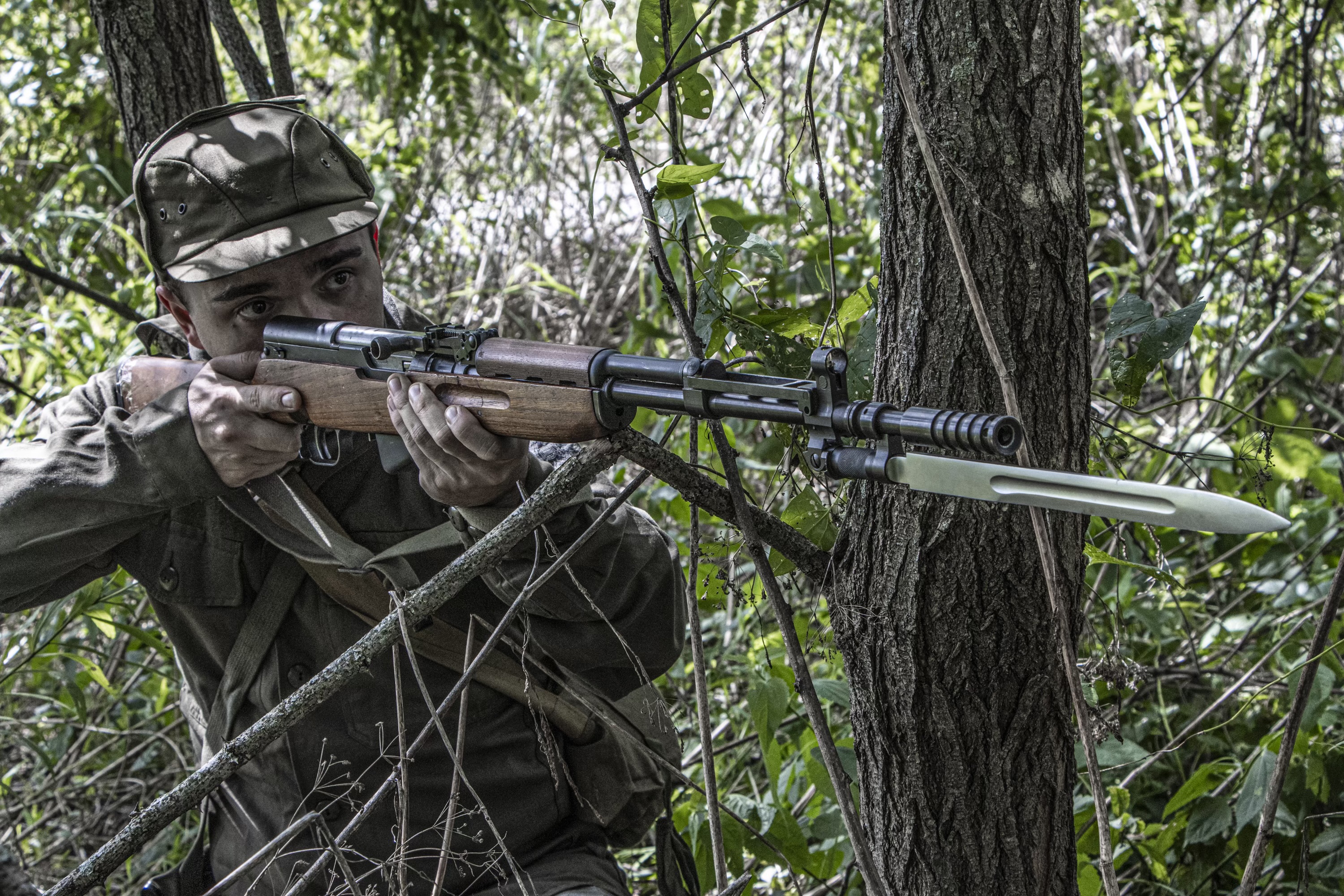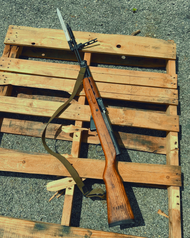Uncovering The Legacy Of The Yugoslavian SKS: A Storied Cold War Relic
Aug 6th 2024
The Yugoslavian SKS, a variant of the Soviet SKS carbine, stands out as a favorite among firearm collectors and enthusiasts. Known for its unique features and historical significance, the Yugoslavian SKS combines the rugged reliability of the original Soviet design with distinct Yugoslavian modifications. This blog post delves into the history, features, and appeal of the Yugoslavian SKS, providing a comprehensive guide for those interested in this fascinating firearm.
The Historical Background of the Yugoslavian SKS
The Yugoslavian SKS, officially designated as the Zastava M59/66, traces its origins back to the early 1960s when Yugoslavia sought to produce a semi-automatic carbine tailored to its military needs. The foundation of the Yugoslavian SKS lies in the Soviet SKS-45, designed by Sergei Gavrilovich Simonov, which had already proven its effectiveness in the Soviet Armed Forces. Yugoslavia, however, aimed to enhance the basic SKS design with features that would address specific requirements of the Yugoslav People’s Army. This initiative resulted in the production of the M59, and later, the M59/66 models by Zastava Arms, a renowned Yugoslavian firearms manufacturer.
The decision to develop the M59/66 was influenced by Yugoslavia's desire for greater self-reliance in military production, amidst the Cold War environment where geopolitical tensions necessitated a robust and independent defense capability. Zastava Arms, leveraging its extensive experience in firearms manufacturing, began production of the M59 in 1959, followed by the improved M59/66 variant in 1966. The M59/66 featured significant enhancements, including a grenade launcher attachment and flip-up night sights, designed to meet the diverse combat scenarios the Yugoslavian forces might encounter. These modifications not only reflected the innovative spirit of Yugoslav engineers but also the practical needs of their military.
The Yugoslavian SKS was produced during a time of considerable political and military evolution within Yugoslavia. Under the leadership of Josip Broz Tito, the country maintained a non-aligned stance, navigating between the influences of both NATO and the Warsaw Pact. This independent approach was mirrored in its arms production strategies, as Yugoslavia invested in creating versatile and reliable weapons like the SKS to ensure its armed forces were well-equipped. The production of the M59/66 continued until the early 1980s, by which time it had become a symbol of Yugoslavian military ingenuity and a sought-after collectible for firearm enthusiasts worldwide.

Key Features Of The Yugoslavian SKS
The Yugoslavian SKS, particularly the M59/66 model, is renowned for several unique features that distinguish it from other SKS variants. These features were introduced to enhance the firearm's versatility and adaptability in various combat scenarios, reflecting the specific needs and innovative capabilities of the Yugoslavian military.
Grenade Launcher - One of the most distinctive features of the Yugoslavian SKS M59/66 is its integrated grenade launcher. This 22mm launcher is mounted on the barrel, allowing the rifle to fire rifle grenades. Accompanying this launcher is a flip-up ladder sight specifically designed for aiming grenades, providing accuracy and effectiveness in launching explosive projectiles. Additionally, the firearm includes a gas cutoff valve, which isolates the gas system when firing grenades, ensuring that the launcher operates safely and effectively without affecting the rifle's normal firing capabilities.
Night Sights - The Yugoslavian SKS is equipped with flip-up night sights, a feature not commonly found on other SKS variants. These night sights are illuminated by tritium, a radioactive isotope that glows in the dark, providing enhanced visibility in low-light conditions. This feature is particularly valuable for night-time operations, allowing soldiers to aim more accurately when natural light is insufficient. The inclusion of night sights demonstrates the Yugoslav military's emphasis on versatility and operational readiness in all lighting conditions.
Non-Chromed Barrel - Unlike many other SKS models, the Yugoslavian SKS features a non-chromed barrel. While a chromed barrel typically offers better resistance to corrosion and ease of maintenance, the non-chromed barrel of the Yugoslavian SKS is favored for its potential to provide improved accuracy. This design choice reflects a balance between maintenance and performance, catering to marksmen who prioritize precision shooting. Collectors and shooting enthusiasts often appreciate this feature for its contribution to the firearm's overall accuracy and historical authenticity.
Blade Bayonet - The Yugoslavian SKS typically comes with a foldable blade bayonet, as opposed to the spike bayonet found on some Soviet models. This bayonet design is not only practical for close-quarters combat but also adds to the firearm's historical and collectible value. The blade bayonet is securely attached to the rifle and can be extended or folded away as needed, maintaining the firearm's sleek profile when not in use.
These key features—the grenade launcher, night sights, non-chromed barrel, and blade bayonet—make the Yugoslavian SKS a standout variant in the SKS family. Each feature reflects the thoughtful modifications aimed at improving the rifle's functionality, versatility, and operational effectiveness, making it a prized possession for collectors and a reliable tool for military use.
Why Collectors Love the Yugoslavian SKS
Historical Significance - The Yugoslavian SKS, particularly the M59/66 model, holds considerable historical significance due to its role in the Yugoslav People's Army during a tumultuous period of the 20th century. Its development and use are closely tied to Yugoslavia's unique geopolitical stance during the Cold War, as well as the broader history of military firearms.
Cold War Context - The production of the Yugoslavian SKS began during the Cold War, a time when global superpowers, the United States and the Soviet Union, were vying for influence across the world. Yugoslavia, under the leadership of Josip Broz Tito, adopted a non-aligned stance, navigating a careful path between the Eastern and Western blocs. This independent approach required Yugoslavia to develop a self-sufficient military industrial base, capable of producing its own weapons and reducing reliance on foreign powers. The Yugoslavian SKS, produced by Zastava Arms, exemplifies this drive for military self-reliance and innovation.
Military Role and Adaptation - The Yugoslavian SKS was adapted to meet the specific needs of the Yugoslav People's Army. The inclusion of a grenade launcher, night sights, and other modifications made the M59/66 model particularly versatile for various combat scenarios. These adaptations demonstrate the Yugoslav military's focus on producing a weapon that could serve multiple roles on the battlefield, from standard infantry engagements to specialized tasks like launching grenades and operating in low-light conditions. The firearm’s widespread use in the Yugoslav People's Army underscores its importance in the country's defense strategy during a critical period of regional and global tension.
Symbol of Yugoslav Engineering and Independence - Beyond its practical military applications, the Yugoslavian SKS stands as a symbol of Yugoslav engineering prowess and the country's broader efforts to assert its independence on the global stage. The production of the SKS, along with other military hardware, showcased the capabilities of Yugoslav industry and the ingenuity of its engineers. This independence was a cornerstone of Yugoslav foreign policy under Tito, which sought to maintain sovereignty and resist domination by either superpower.
Legacy and Collectibility
The historical significance of the Yugoslavian SKS extends into the present day, where it is highly valued by collectors and historians. Its unique features and modifications, as well as its role in the Yugoslav military, make it a sought-after piece for firearm enthusiasts. Collectors appreciate the SKS not only for its functional qualities but also for its rich historical context, which provides a tangible connection to the Cold War era and the specific geopolitical dynamics of Yugoslavia.
Unique Modifications - The distinctive features of the Yugoslavian SKS set it apart from other SKS variants. The grenade launcher, night sights, and non-chromed barrel are particularly prized by collectors who seek out unique and rare firearm characteristics.
Build Quality - Zastava Arms is known for producing high-quality firearms, and the Yugoslavian SKS is no exception. The robust construction and reliable performance of these rifles make them not only collectible but also functional for shooting enthusiasts.
Conclusion
In conclusion, the Yugoslavian SKS is a historically significant firearm that embodies the unique political, military, and industrial context of Yugoslavia during the Cold War. Its development and use reflect the country's efforts to maintain independence and self-sufficiency, while its continued popularity among collectors highlights its enduring legacy. Whether you're a seasoned collector or a novice enthusiast, the Yugoslavian SKS provides a captivating glimpse into the world of military firearms and the ingenuity of Yugoslavian engineering. By understanding its history, features, and appeal, you can appreciate why this firearm holds a special place in the hearts of collectors worldwide.
Explore our collection of Yugoslavian SKS rifles today and add a piece of history to your arsenal!

